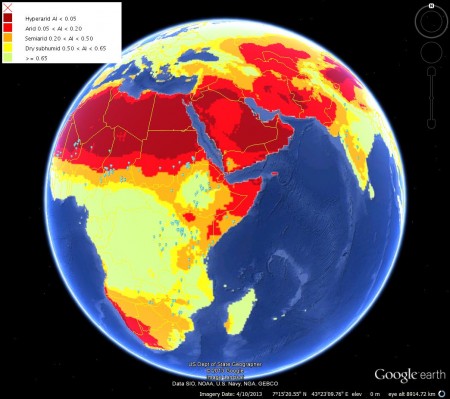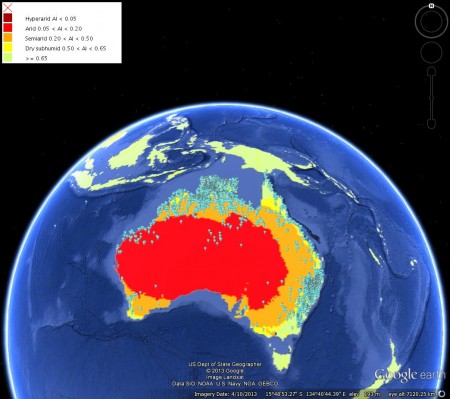I’m not entirely sure why, but I get the occasional alert from something called the FAO GeoNetwork when a new dataset comes online. This morning it was global aridity. It’s not really very detailed or anything, but when something like that is available in a format that Google Earth can handle, I can very rarely resist the temptation of clicking on the link. So, in case you’re interested, this map shows the distribution of African wild Sorghum accessions in Genesys (that’s the little blue dots, which you’ll be able to see better if you click on the image — sorry about that) superimposed on that aridity thing.
This suggests to me that if you want really drought-tolerant wild Sorghum germplasm, the Sahel is where to look, rather than southern Africa or South Asia. But what about Australia, I hear you ask? Well, Genesys doesn’t have any wild sorghum from Australia, but GBIF does.
Here we’re looking at herbarium specimens, remember, rather than genebank accessions, but it does seem that Australia may be a slightly better bet for aridity-adapted wild sorghums than Africa. But for hyper-arid adaptation, it’s the Sahara for you.


Luigi: In both maps it comes over as possibly a bimodal distribution. It is possible that the closest relatives to cultivated sorghums are in the wetter areas. I am not sure about Australia (with 17 of the global list of 25 Sorghum species). If you are talking of breeding for climate adaptation, a lot of the Australian species are a mixture of semi-arid monsoon climate (in the North) or warm temperate or even mediterranean (some in the wine areas). How about using them for breeding for cooler climate sorghum?